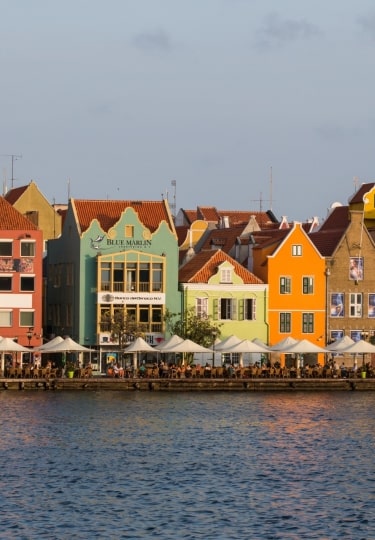When comparing Aruba vs. Curaçao, you’ll see they are both part of the Dutch ABC Islands (the “B” is Bonaire), just off the Caribbean coast of Venezuela. That gives them similarities, but there are also many things to set them apart.
Most of the differences between Aruba and Curaçao can be explained by their geography. Aruba is the smaller island at 70 sq miles, while Curaçao is more than twice as large, and further from the mainland.
Perhaps surprisingly, this small variation gives these neighbors their own distinct character, even down to the weather. Fortunately, they are so linked that it’s simple to visit both, saving you from having to choose Aruba over Curaçao—or vice versa.
Geography, Climate & Location
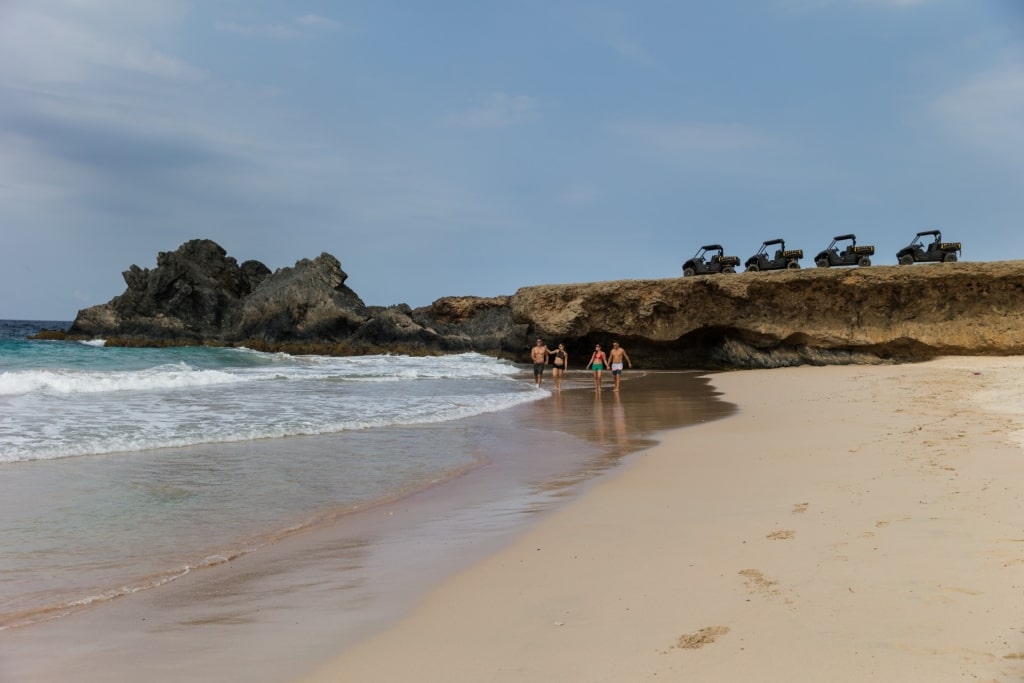
Beach in Aruba
With its tallest point barely 600 feet high, Aruba is a relatively flat island. Curaçao is much hillier, with a highest point in Christoffelberg at 1,220 ft.
Aruba has an arid climate with low rainfall, while Curaçao sees slightly more rain, making it semi-arid. The aloes for which Aruba is famous for require no irrigation, while Curaçao’s bitter oranges have adapted to the aridity.
Both islands are outside the so-called hurricane belt, but can still be affected by tropical storms; travel in October and November and you may encounter some rain, which clears the air.
Any rain on either island arrives in short-lived bursts from October, and into December. These quick showers are often a welcome break from the heat, with warm temperatures otherwise being a constant.
With so little rainfall, almost all the freshwater used on both islands is distilled from seawater. This produces what’s said to be the best quality drinking water in the Caribbean.
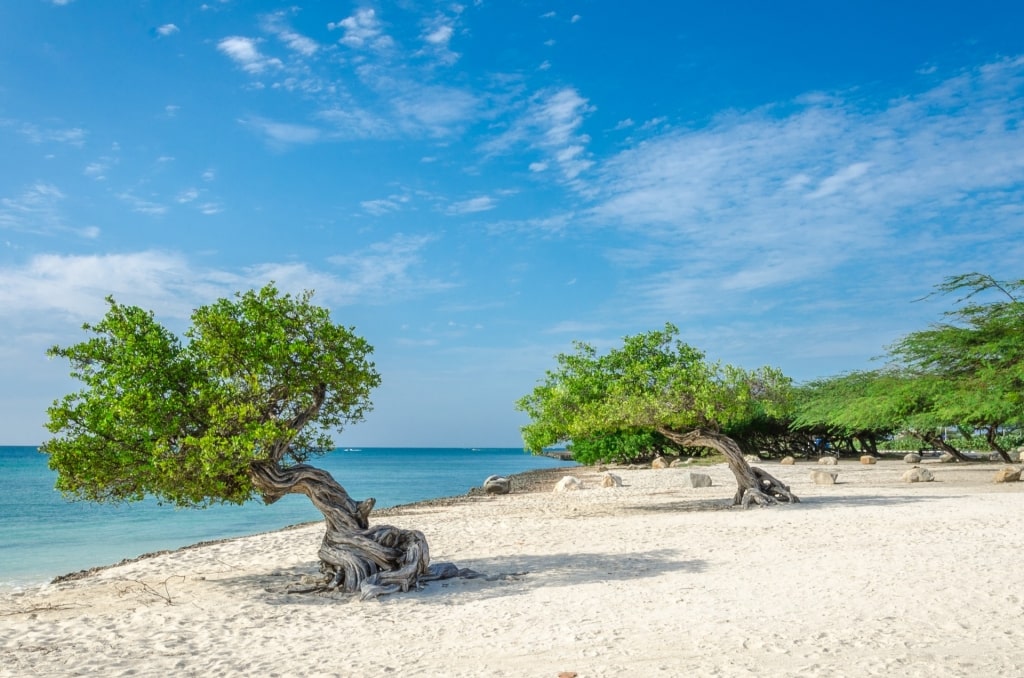
Eagle Beach, Aruba
The prevailing northeast trade winds give many trees on both islands a distinctive bend to the southwest. The weather-twisted fofoti and divi-divi trees on both islands must be among the most photographed in the Caribbean.
That wind hits the flatter Aruba more strongly than Curaçao, with its protective hills. Windsurfers love Aruba for this, although beginners prefer the more sheltered neighbor.
Curaçao has a population of around 150,000, a large part of whom live in the capital, Willemstad. Aruba’s population of 125,000 live mostly around Oranjestad, and San Nicolaas.
Beaches
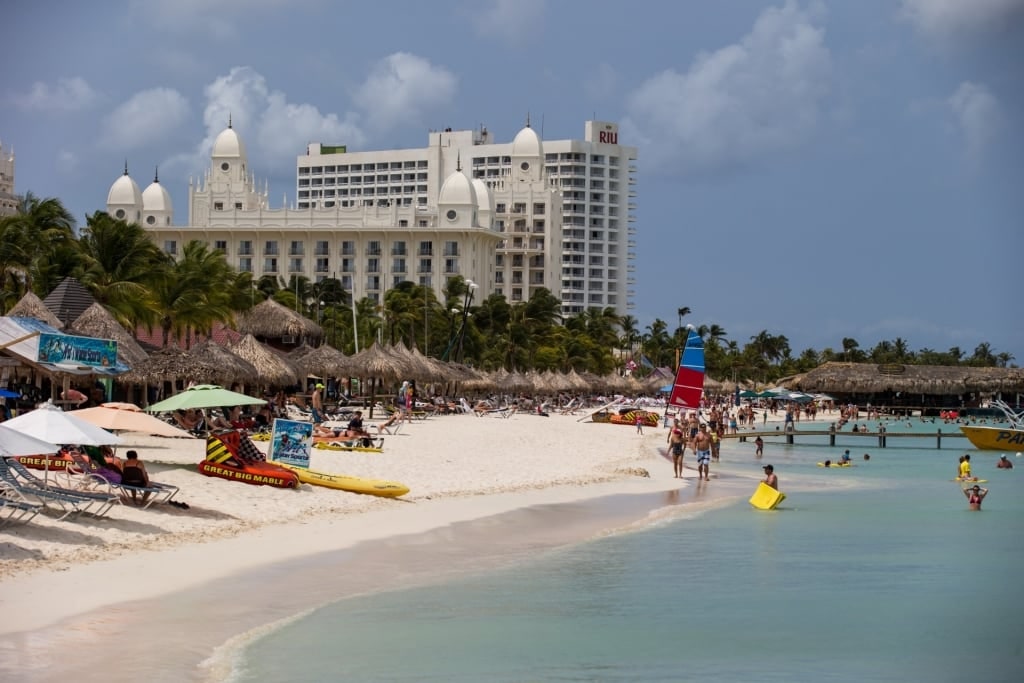
Beach in Aruba
Aruba’s aridity comes into its own where the land meets the sea in long, idyllic white sand beaches. Sun-worshippers will not want to leave gems such as Eagle Beach and Palm Beach.
Eagle Beach’s much-photographed pair of fofoti trees are a major landmark. Palm Beach is busier, but has the same pure white sand and aquamarine water.
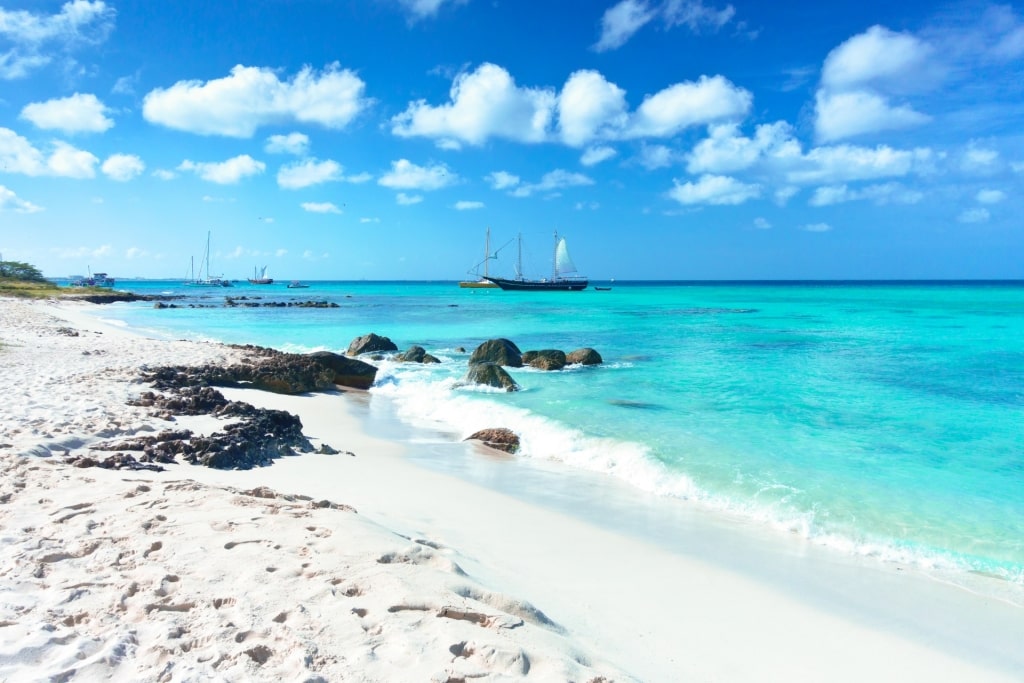
Arashi Beach, Aruba
One of the quieter beaches on Aruba is Arashi, near the California Lighthouse. It’s popular with snorkelers, and beginner surfers, for its mild currents, clear water, and abundant marine life.
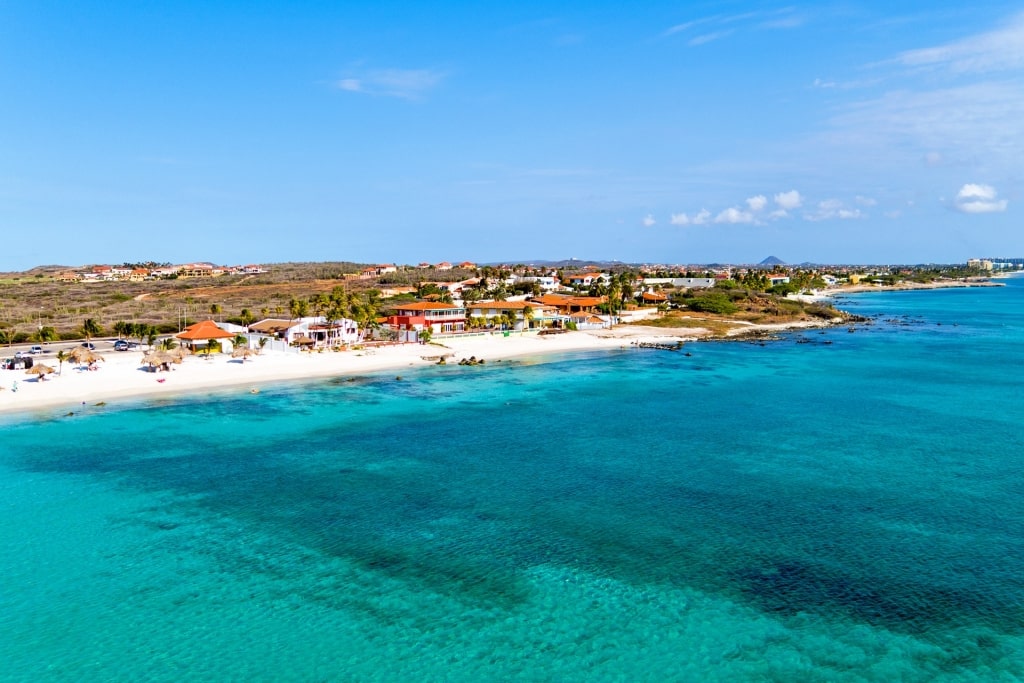
Boca Catalina, Aruba
Another popular spot for snorkeling in Aruba is Boca Catalina, a small cove near Arashi Beach. A German shipwreck in the bay, the Antilla, is also an attraction for divers—although it’s a bit too far out, and too deep for inexperienced snorkelers.
Curaçao, in contrast, has 230 miles of coastline, against the smaller neighbor Aruba’s 40 miles. That’s room for 38 beaches in Curaçao in total, but the better ones are mostly found along the south coast in small coves.
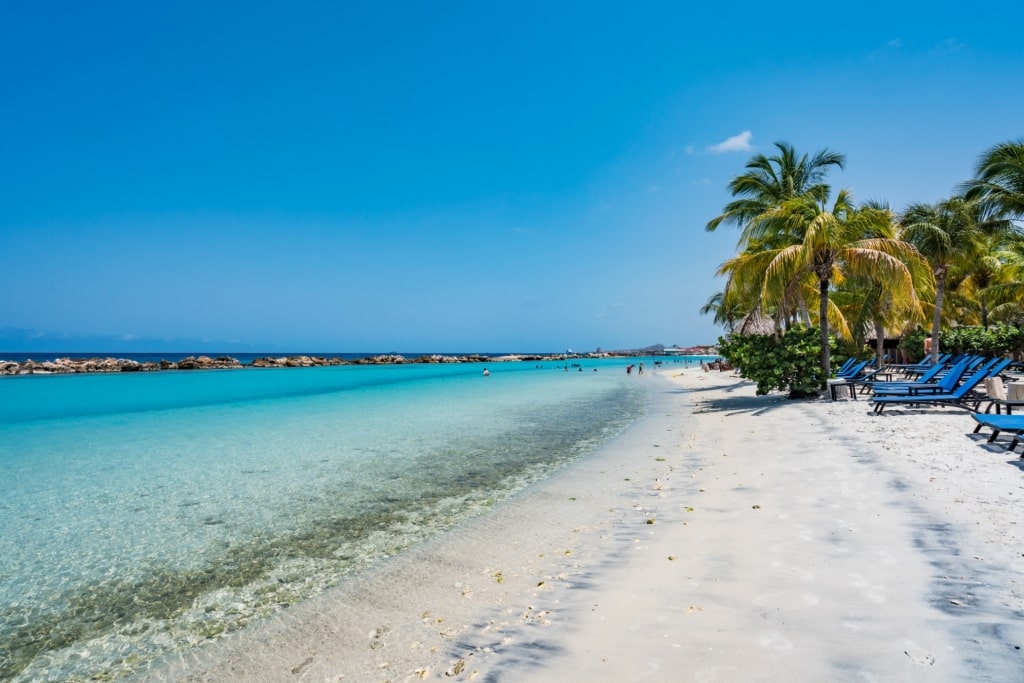
Mambo Beach, Curaçao
A notable exception is the long man-made stretch of Mambo Beach, just a few miles outside Willemstad. Popular for water sports, it is backed by a boulevard full of restaurants, bars, and shopping.
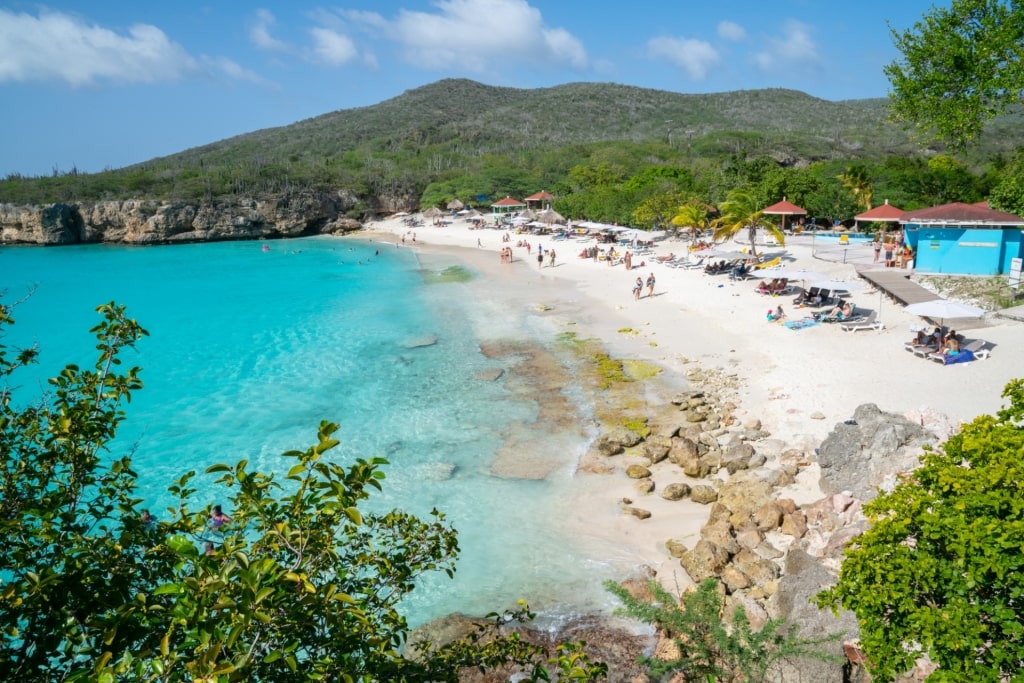
Knip Beach, Curaçao
Among those smaller ones, a standout is Knip Beach, split into Grote (Big) Knip, and Kleine (Little) Knip. This is a good place to snorkel in Curaçao, although it’s a long swim out to the reef.
So essentially, if you’re weighing up the idea of Aruba vs Curaçao and beach life is a priority, you can’t go wrong with either.
Diving

Curaçao Underwater Marine Park
There is great scuba diving on both islands, with Aruba notable for its wrecks, as well as some of the best reefs in the Caribbean. Curaçao has more variety, including plenty of excellent shore dives.
Curaçao Underwater Marine Park covers 12 miles along the southeast coast. It offers a choice of 11 dive sites, including several sunken wrecks.
Unable to choose, many divers take in not only both islands, but also Bonaire. It does seem a shame to visit the A&C but not the B of the ABC islands if exploring the underwater world is your dream.
Cuisine
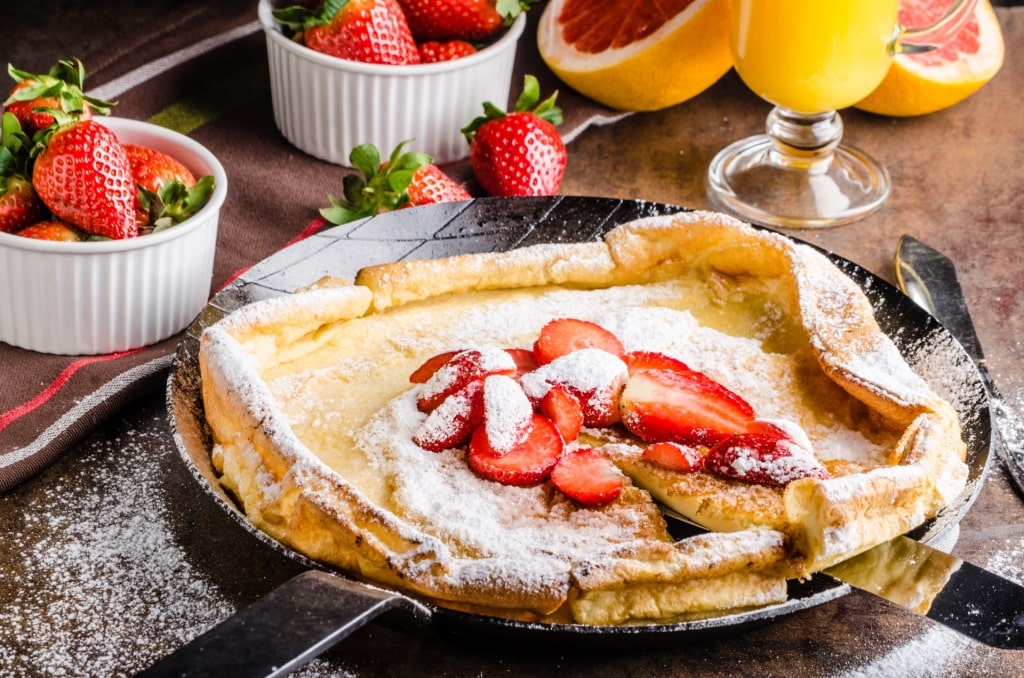
Dutch pancakes
You might not expect much difference between the food on two small islands, both part of the same chain with the same Dutch background. Indeed, a fusion of Dutch, Spanish, Caribbean, European, and American cuisine is a constant on Aruba, Curaçao, and Bonaire.
However, the more-visited Aruba has a stronger American and Dutch feel to its food. Curaçao’s cuisine shows more of a Spanish and Portuguese influence.
That said, the national dish in Curaçao, and Aruba is keshi yena, a cheese dish showing their joint Dutch heritage. It’s a hearty ball of cheese (kaas in Dutch, from which comes the word keshi) stuffed with spiced meat, then steamed or baked.
You’ll also enjoy discovering Dutch pancakes, if you’re not already a fan. One of the best things to do in Aruba is to sample your way around the island’s pancake outlets.

Blue Curaçao
Traveling around Curaçao, you’ll notice its laraha (bitter orange) trees. Their oil is an essential ingredient in the famous Blue Curaçao liqueur, and triple sec, but also in Belgian witbier.
These trees were introduced by the Spanish but lack of water meant they did not prosper, and began to run wild. It was centuries later before it was realized how flavorful their skins had become.
In short, both islands have exciting cuisine to discover and you’ll leave either pleased that you’ve tried something new.
Read: Best Food in Aruba
Natural Attractions
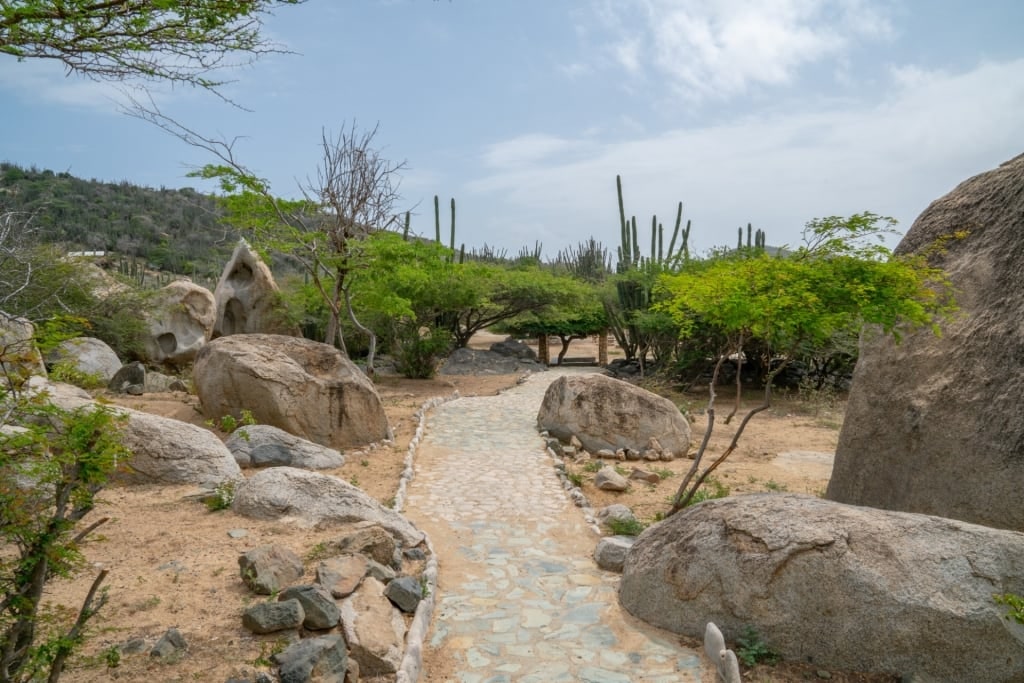
Casibari Rock Formation, Aruba
Reached on foot, horseback or by 4×4, Aruba’s Conchi Natural Pool is a calm swimming pond surrounded by rugged coastal rocks. Surf sometimes breaks into the pool, adding to the thrill of the adventure.
The Casibari Rock Formation is a set of huge boulders from the top of which you can enjoy surprisingly big views over the flat Aruban landscape. There is a popular hiking trail, and an even more popular BBQ shack to relax in.
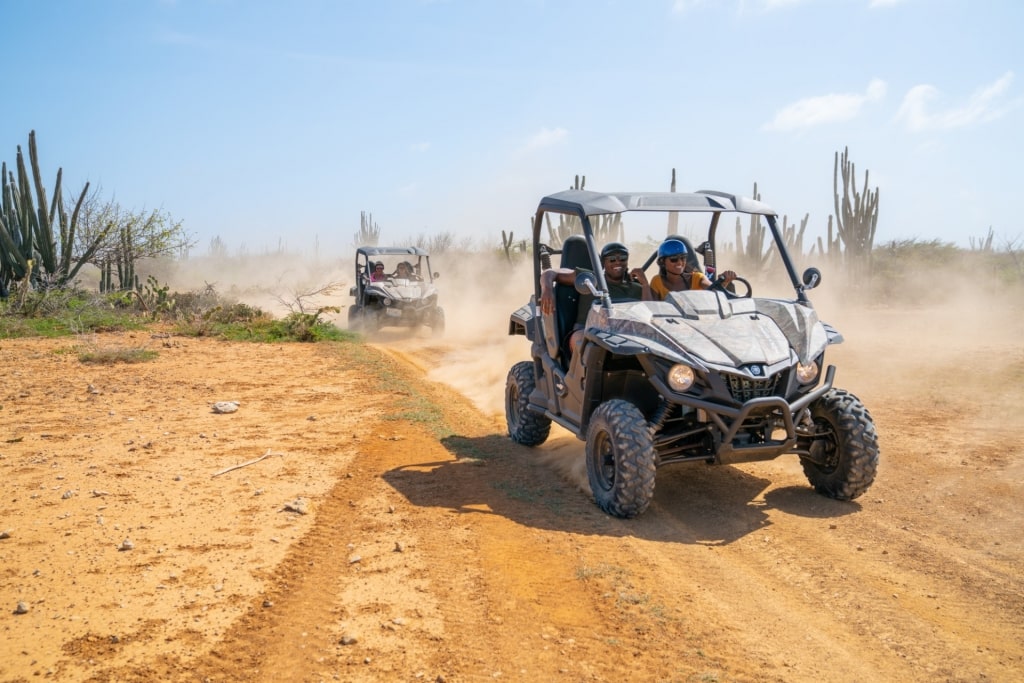
Arikok National Park, Aruba
One of the best places to visit in Aruba, Arikok National Park takes up almost 20 percent of the island, and is best explored on a 4WD tour, or on horseback. You’ll see the desert-like interior, covered in cacti, and a wild stretch of coastline.
Although Curaçao is much larger than Aruba, it has fewer visitors, so it’s much easier to find a wild corner. Near the rugged western point of the island is Shete Boka National Park, where waves crash into a spectacular series of coral sea caves.
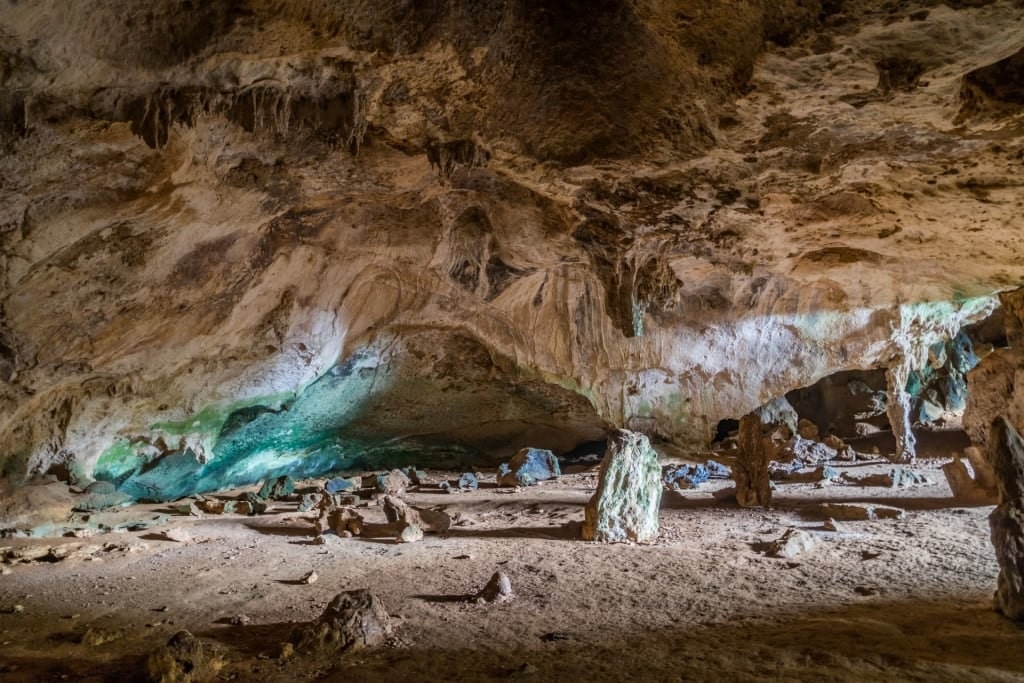
Hato Cave, Curaçao
Hato Cave, on the north coast near the airport, is an ancient coral limestone cave. Its rock formations include one in the form of a Madonna, and it’s also home to a flock of long-nose bats.
History & Culture
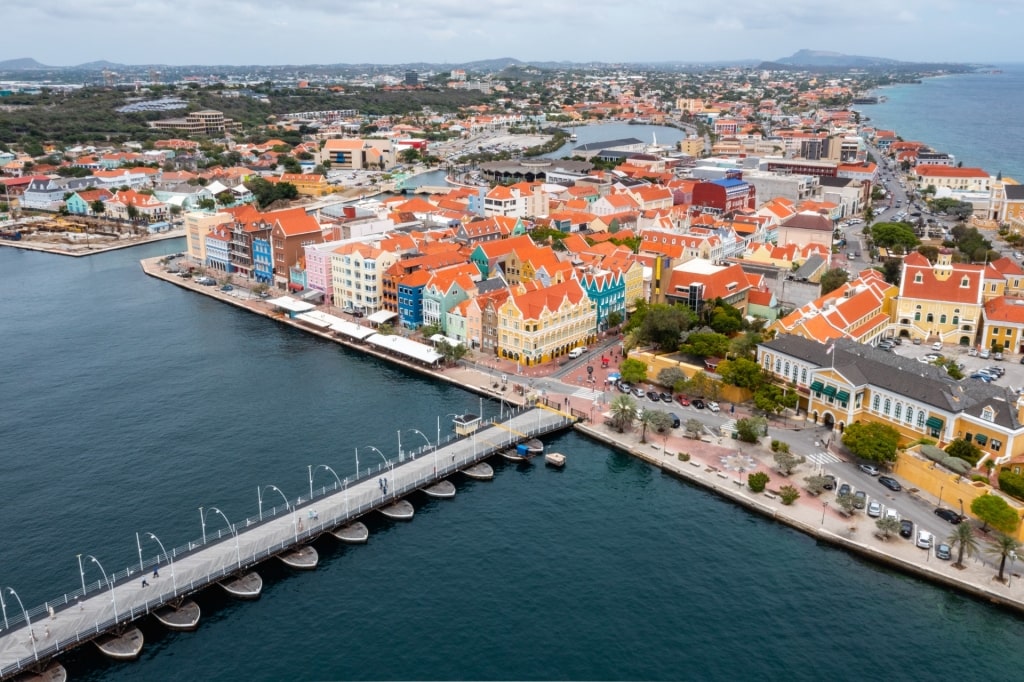
Willemstad, Curaçao
Aruba (along with Curaçao) was “discovered” by the Spanish in 1499 but the lack of water meant it was mostly used as a source of Amerindian slaves. Spanish rule came to an end in 1636 when the Dutch seized Aruba and Curaçao during their Eighty Years’ War with Spain.
With its large natural harbor, Curaçao had a more troubled history. It became a centre of the Dutch slave trade, and was seized several times by the British before finally returning to Dutch rule in 1815.
Aruba and Curaçao are now two of the four constituent countries of the Kingdom of the Netherlands. The Netherlands itself, and the island of Sint Maarten are the other two parts.
You can see the Dutch influence in the architecture of each island, from farmhouses to government buildings. You’re also going to hear lots of Dutch (and Spanish) around you, but visitors will have no trouble as English is very widely spoken.
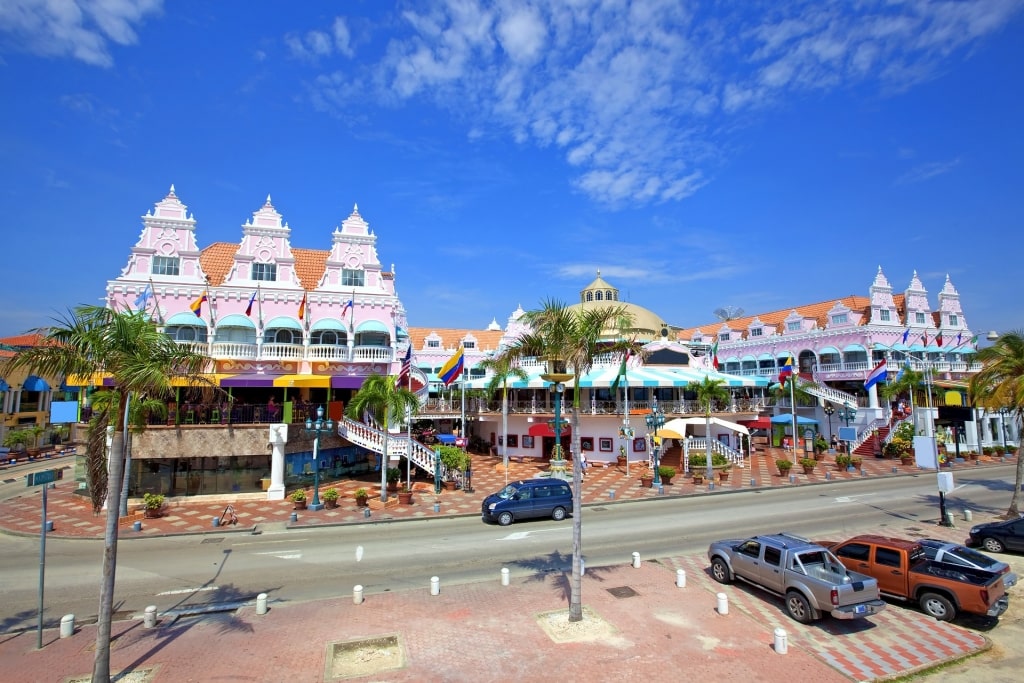
Oranjestad, Aruba
A guided tour of Aruba’s pretty capital, Oranjestad, will introduce you to its long and interesting history. The pastel-colored buildings, many with Dutch-style gables, are a delight.
The Historical Museum in Fort Zoutman, and the National Archaeological Museum, whose building dates to 1929, are other sites for those interested in history. Fort Zoutman was built in 1798, making it the oldest structure on the island.
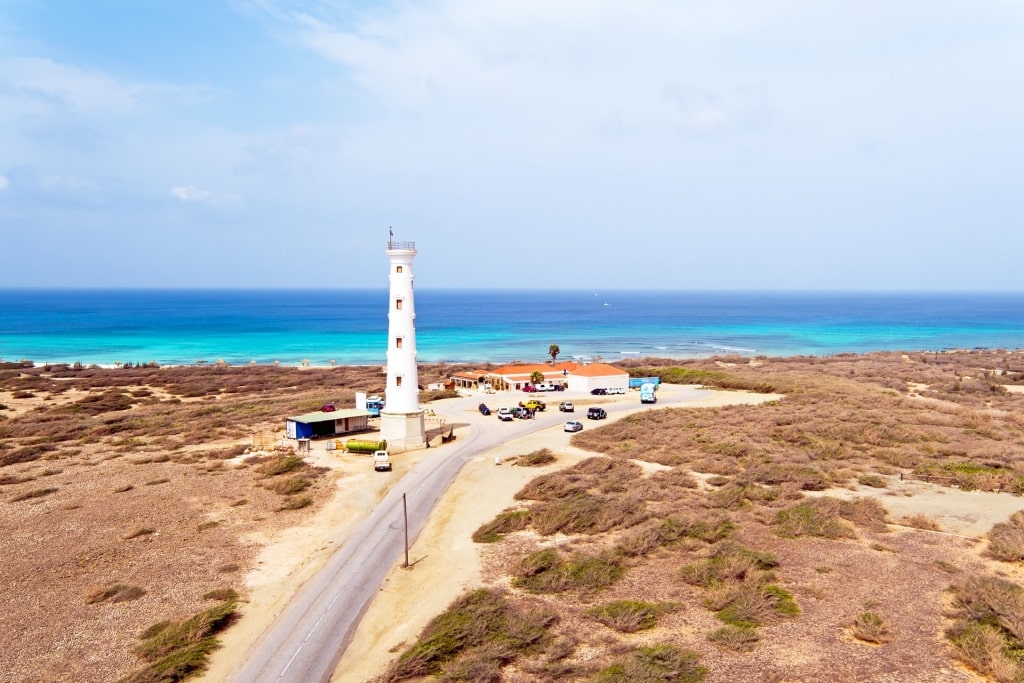
California Lighthouse, Aruba
Aruba’s California Lighthouse is the island’s most historic monument, and tallest structure. It stands near Arashi Beach and has wonderful views of the island.
Bushiribana Gold Mill is now a picturesque ruin. Standing in the middle of Aruba, it was the site of a short-lived 1824 gold rush.
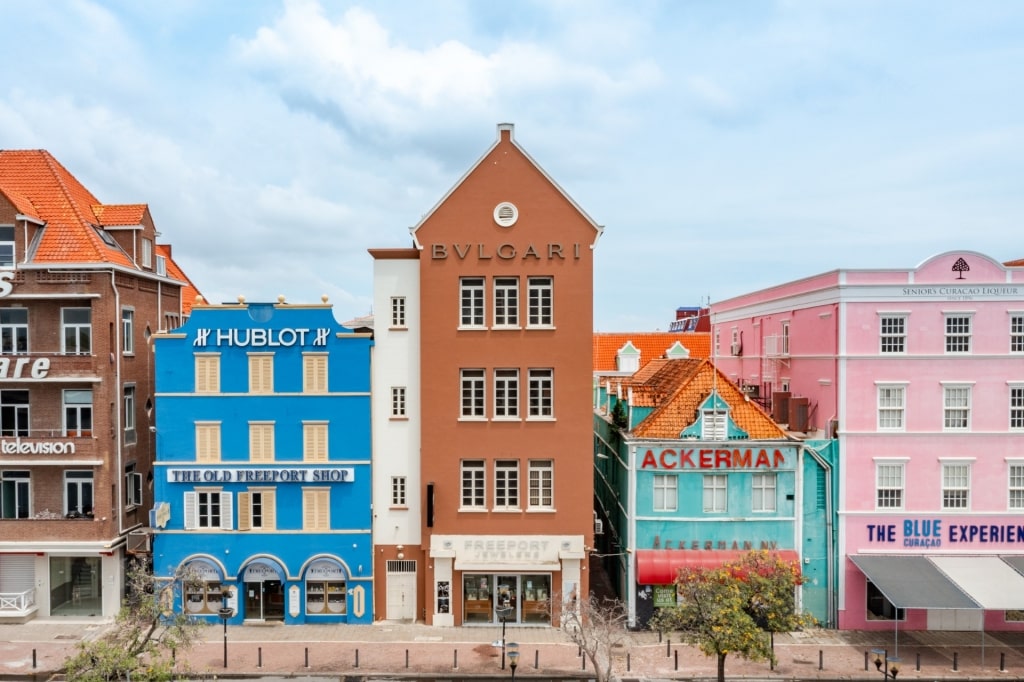
Willemstad, Curaçao
Curaçao, with its larger settlements, has more obvious history to see. The Historic Area of Willemstad dates to 1634, and its buildings show strong Dutch but also Spanish and Portuguese influences.
This area of the capital is part of a Unesco World Heritage Site. Protected by Fort Amsterdam, it is the Caribbean’s best surviving example of European colonial history.
Fort Amsterdam was designed to defend Curaçao from the Spanish, who kept trying to take the island back. The picturesque yellow building, now used for government offices, houses a small museum.
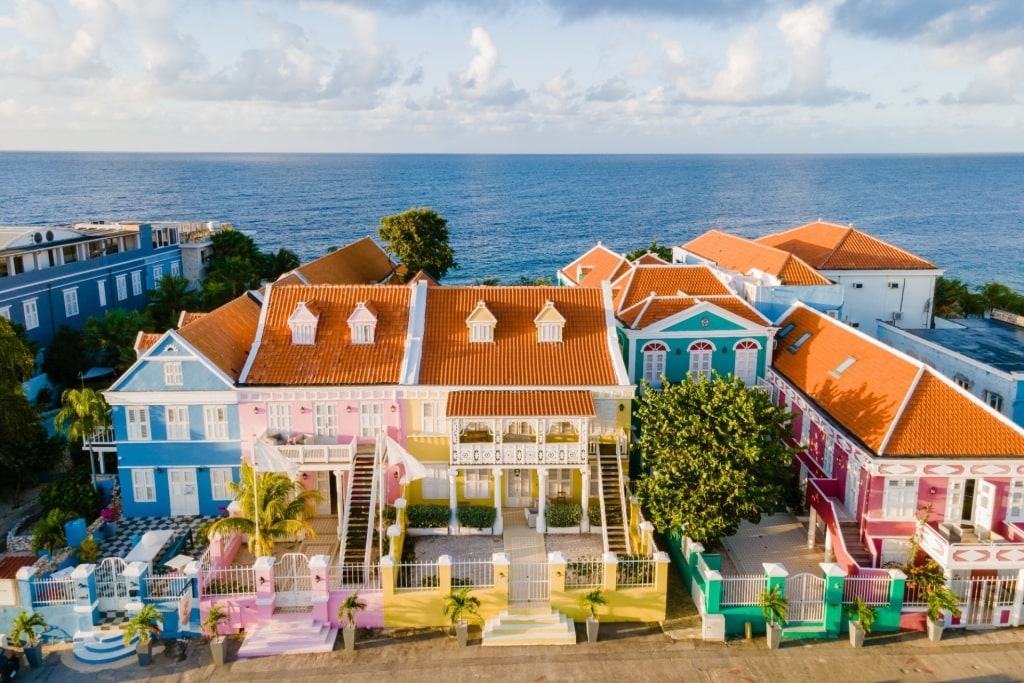
Pietermaai District, Curaçao
Pietermaai District, the “SoHo of Curaçao”, has shops, bars, restaurants, and history. Founded in the 18th century, it preserves many buildings reflecting its long history.
At the Curaçao Museum, you can find out more about the island’s past. Set in a former military hospital, the museum has a strong emphasis on art and culture center.
Visitor Attractions

Curaçao Sea Aquarium
Aruba sees four times more visitors than Curaçao. That’s partly down to better air connections to North America, and the appeal of its longer, wider beaches.
Given Aruba’s beautiful beaches, it has little need of extra attractions. The much larger Curaçao has more things to do generally, with the capital of Willemstad being the center for many.
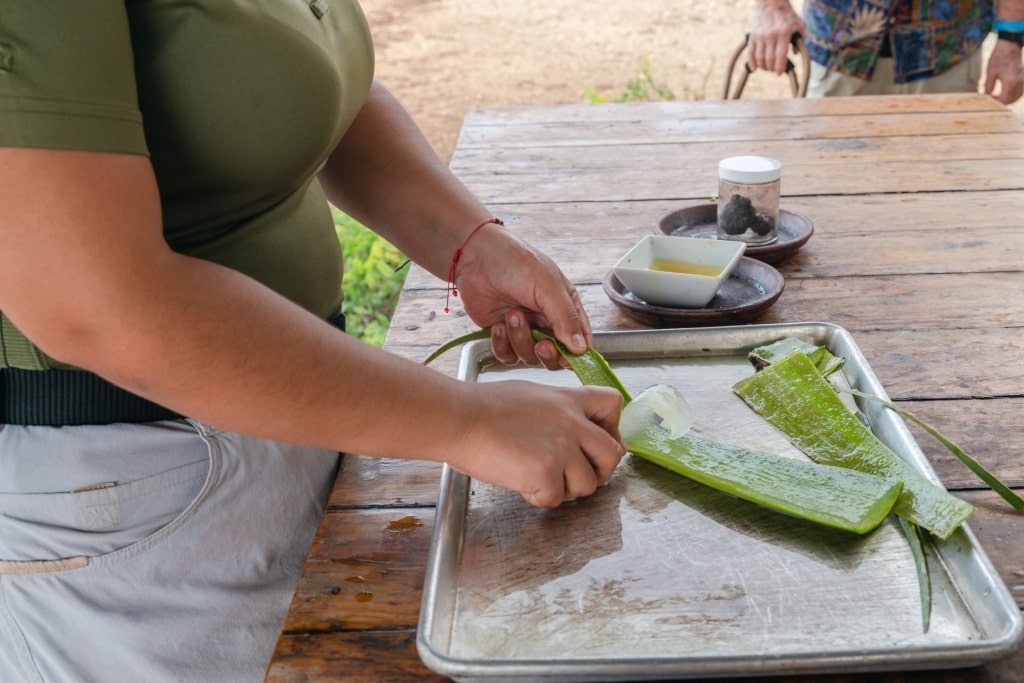
Aruba Aloe
The aloe features on Aruba’s coast of arms, and Aruba Aloe has been making its products since 1890. It is one of the few companies in the world that grows, harvests, and processes its own aloe.
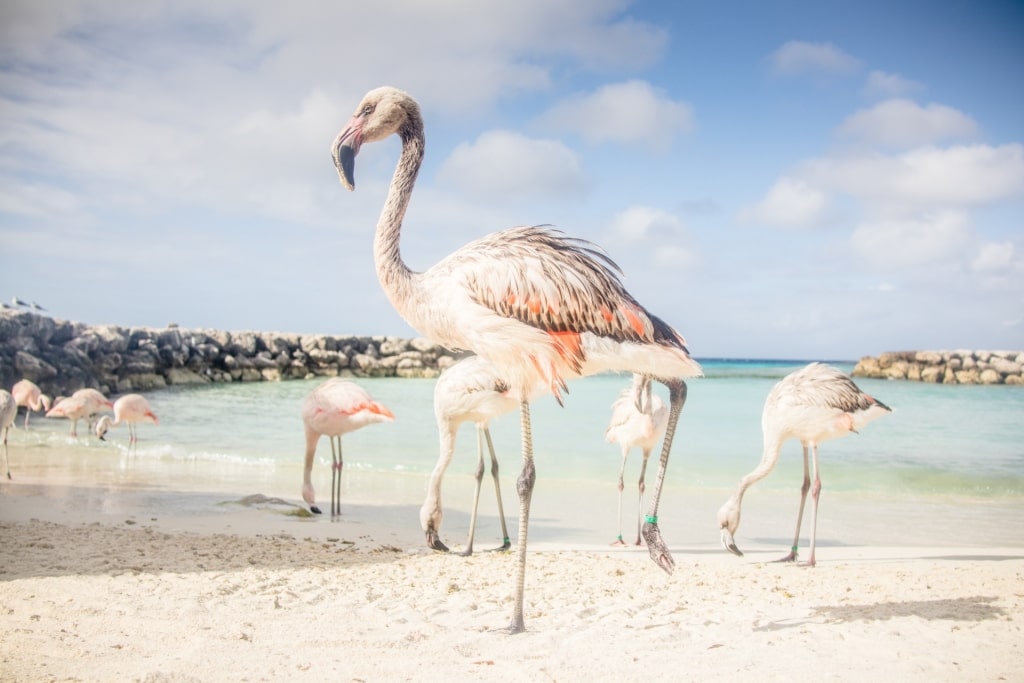
De Palm Island, Aruba
De Palm Island is an idyllic private island off the coast of Aruba with a water park and coral reef to explore. Its flock of pink Chilean flamingos and Cuban flamingos is a unique sight in this region.
There’s more wonders of nature at Aruba’s Butterfly Farm. The farm has hundreds of species from around the world that you can photograph to your heart’s content.
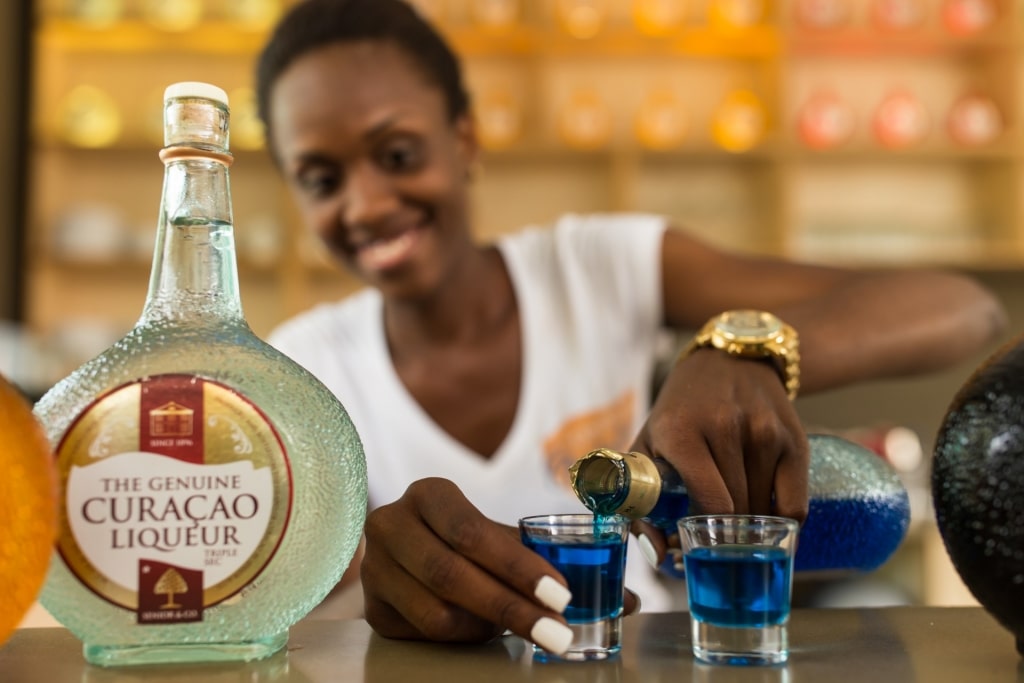
Landhuis Chobolobo Estate, Curaçao
Given that there are more things to do in Curaçao beyond the beach, you need to plan your time. You know you’ve arrived on the island when you visit Landhuis Chobolobo Estate, built as a country retreat for a wealthy 19th-century merchant. It’s now the home of the famous Blue Curaçao distillery, making a guided tour and tasting a unique must-do.
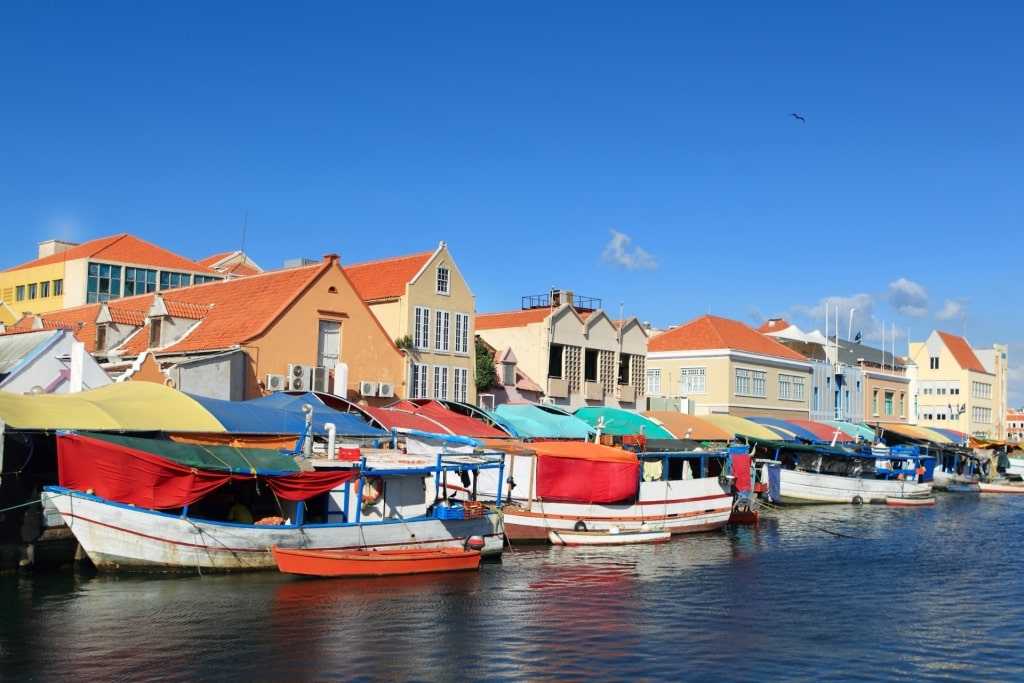
Floating market in Willemstad, Curaçao
The floating market on Willemstad’s waterfront sees colorful boats from Venezuela mooring up to sell their fresh produce. Photographers love the boats, and the fresh fish, fruit, and vegetables.
The modern Queen Juliana Bridge in Willemstad is the tallest bridge in the Caribbean. There are great views from the walkway of the capital, and the rest of Curaçao.
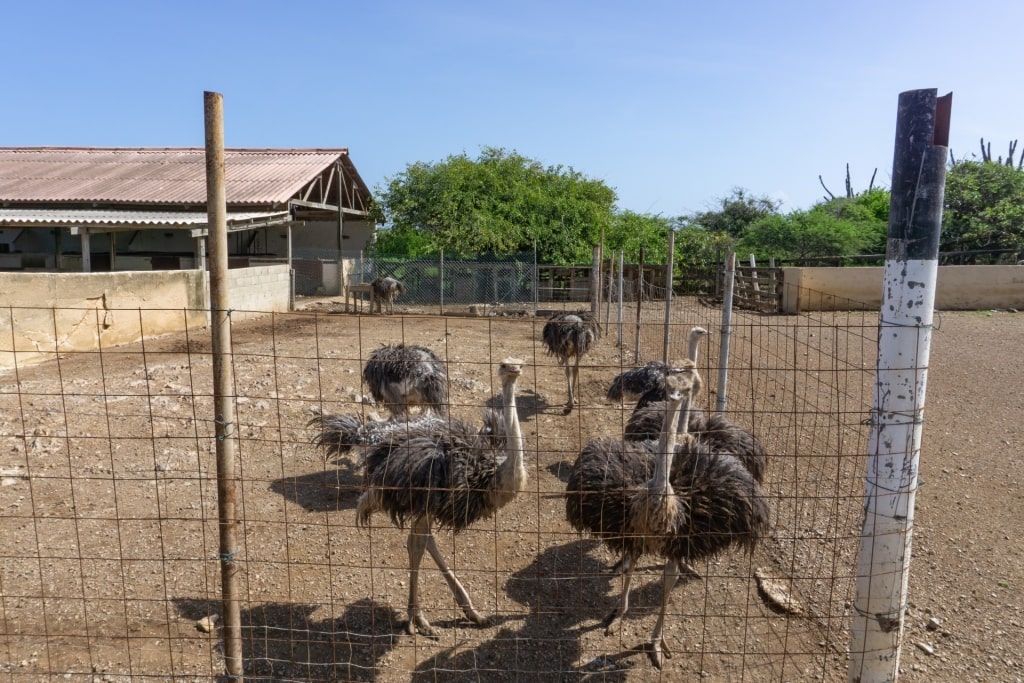
Ostrich Farm, Curaçao
One of the biggest breeding farms outside Africa, Curaçao’s Ostrich Farm lets you see, photograph, and even ride an ostrich. Its Zambezi restaurant offers African and international cuisine, including ostrich burgers.
Curaçao Sea Aquarium, near Mambo Beach extends out to the coral reef, letting you see marine life in a very natural setting. A highlight is the tours by semi-submarine, or glass-bottom boats.
Read: Aruba Travel Tips
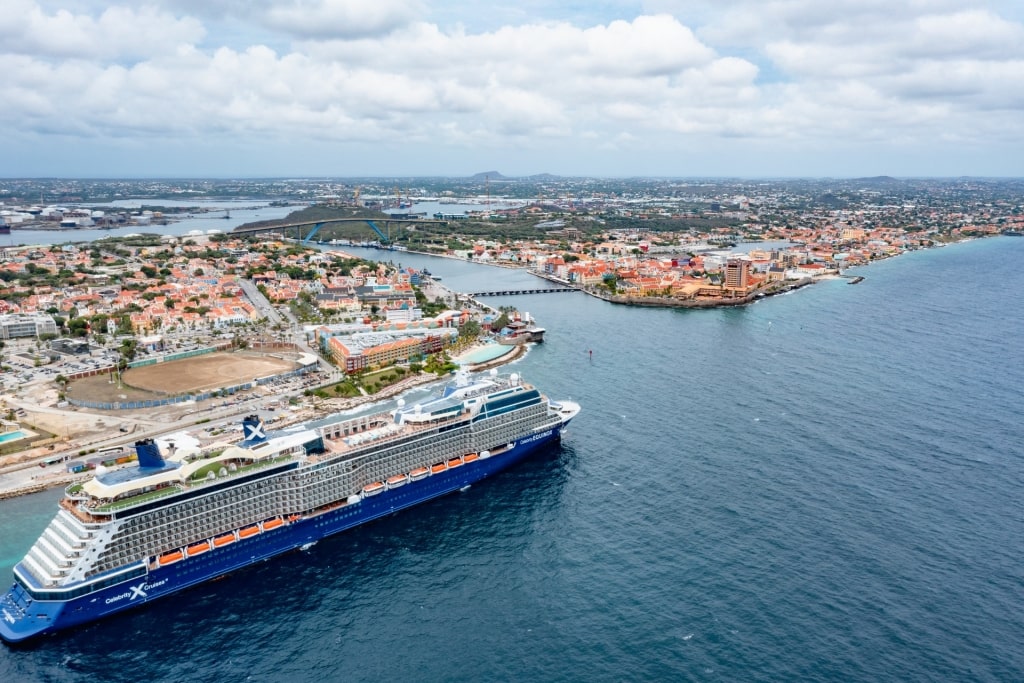
Willemstad, Curaçao
Still can’t decide between Aruba and Curaçao? Then visiting both is the answer. Browse our Caribbean itineraries and you’ll find the perfect cruise to help your dream become reality.
